Dairy Cow Isopods are arguably the go-to species for beginners and experienced keepers alike.
Long favored for their mottled black-and-white coloration and incredible bioactive potential – they’re a perfect blend of isopod aesthetics and functionality.
Honestly, there’s nothing like a tiny herd of Dairy Cow Isopods to lift your moo-d (sorry).
Find out how to care for this popular species and how to use them effectively in a bioactive setup.
Let’s dig in!

Terrarium Tribe is reader-supported. When you purchase through links on our site, we may earn an affiliate commission (at no further cost to you). 💜
Dairy Cow Isopods – An Overview
Porcellio laevis ‘Dairy Cow’ has a lot in common with their bovine namesakes.
They’re large, black and white all over, and they have quite the appetite! Which of course, we can put to great use as a cleanup crew in a terrarium or vivarium.
It’s no surprise that this versatile species has become one of the most common isopods in the industry.
Though its distinctive coloration is just one expression of the “Dalmatian gene,” which is the source of many colored isopod varieties.
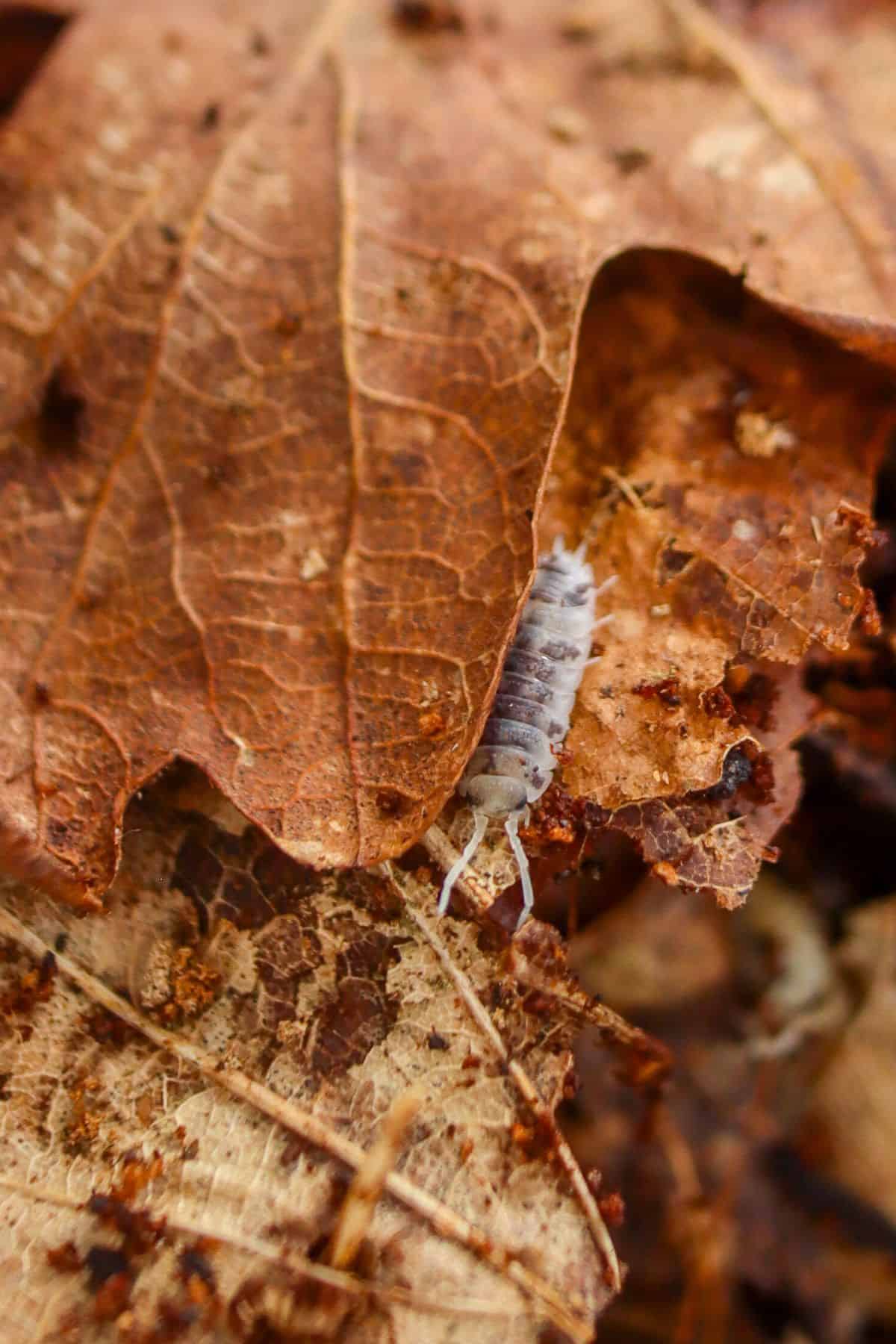
This gene also gives rise to the popular “Dalmatian Isopod” which is essentially a Dairy Cow with much smaller spots. But, it’s also present in other isopod species, producing the likes of the yellow-spotted Japanese Magic Potion Isopod (Armadillidium vulgare) and the Oreo Crumble Isopods.
But, today we’re deep diving on the Dairy Cow Isopods, which are Porcellio laevis.
I mean, Porcellio laevis alone is so widespread across the world that it’s known as a “cosmopolitan species” (which is a designation that I find hilarious).
This jet-setting isopod has traveled the world, and your home could be next on the itinerary!
Benefits of Dairy Cow Isopods
- Bioactive beasts – Dairy Cow Isopods are absolute machines when it comes to processing organic waste material and enriching soil. They’re fantastic substrate aerators too, so they have a huge positive impact on the overall health of a terrarium or vivarium.
- Easy & quick breeding – Exactly this… Make sure you definitely want a large herd of dairy cows because that’s exactly what you’re going to get in a very short time.
- Affordability and availability – Being such a foundational isopod species, Dairy Cow Isopods are widely available and remain very affordable.

Dairy Cow Isopods – 10 Count
Large, efficient, and easy-care bioactive cleanup crew.
Available on the Terrarium Tribe Store.
Okay, so bigger isn’t always better so I can’t exactly list “size” as a benefit, but sometimes you just need a big and strong isopod to do the job.
Growing up to almost 2cm, it’s no wonder they take some feeding.
How to Care for Dairy Cow Isopods
Habitat
Dairy Cow Isopods are one of the larger species on the market, so you’re going to need a reasonably sized container to culture them.
A large Tupperware box with some is a common and affordable option to get started with. You’ll need to create some holes for ventilation if it doesn’t have any already.
Just note, it’s always better to punch the holes in the sides rather than the lid to get some proper airflow going.
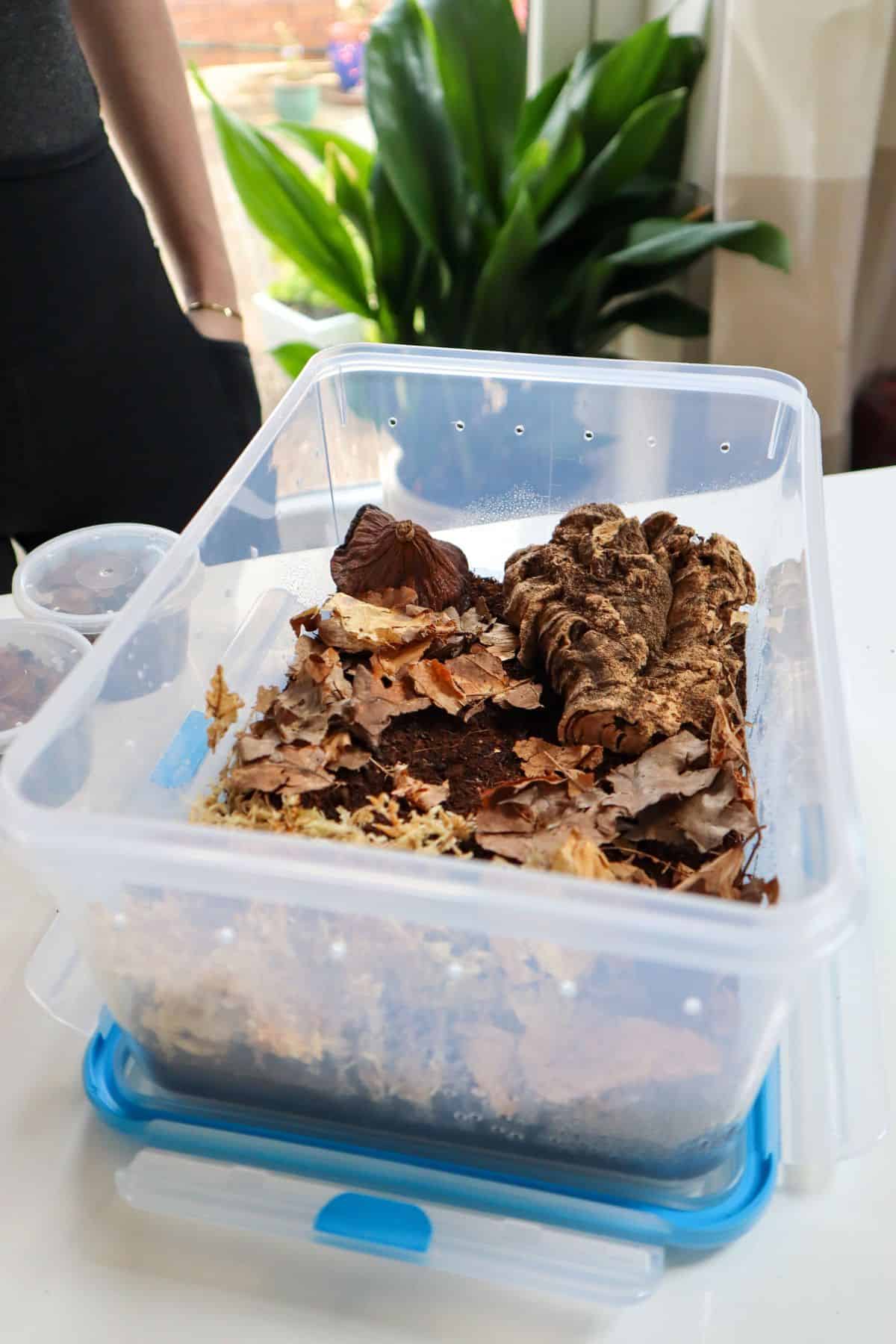
To be able to achieve a minimum substrate depth and have ventilation holes on the side that are out of reach from the isopods, you’ll need a box of about shoebox size or more.
Naturally, a dedicated vivarium ecosystem or large plant terrarium setup should have everything a Dairy Cow Isopod population needs to thrive – especially larger containers where they have lots of space and nutrition to enjoy.

As to what to put in it? Cork bark is always a winner.
It’s all-natural, water and mold-resistant, and isopods love it. Seriously, it’s where Dairy Cow Isopods like to hang out like 90% of the time, I’d definitely recommend at least one chunk.

Cork Bark Pieces
A fan-favorite shelter and food for bioactive critters.
Available on the Terrarium Tribe Store.
They’re actually a pretty shy species, and I find they spend most of their time hidden throughout the day. You’ll see them a lot more active at night.
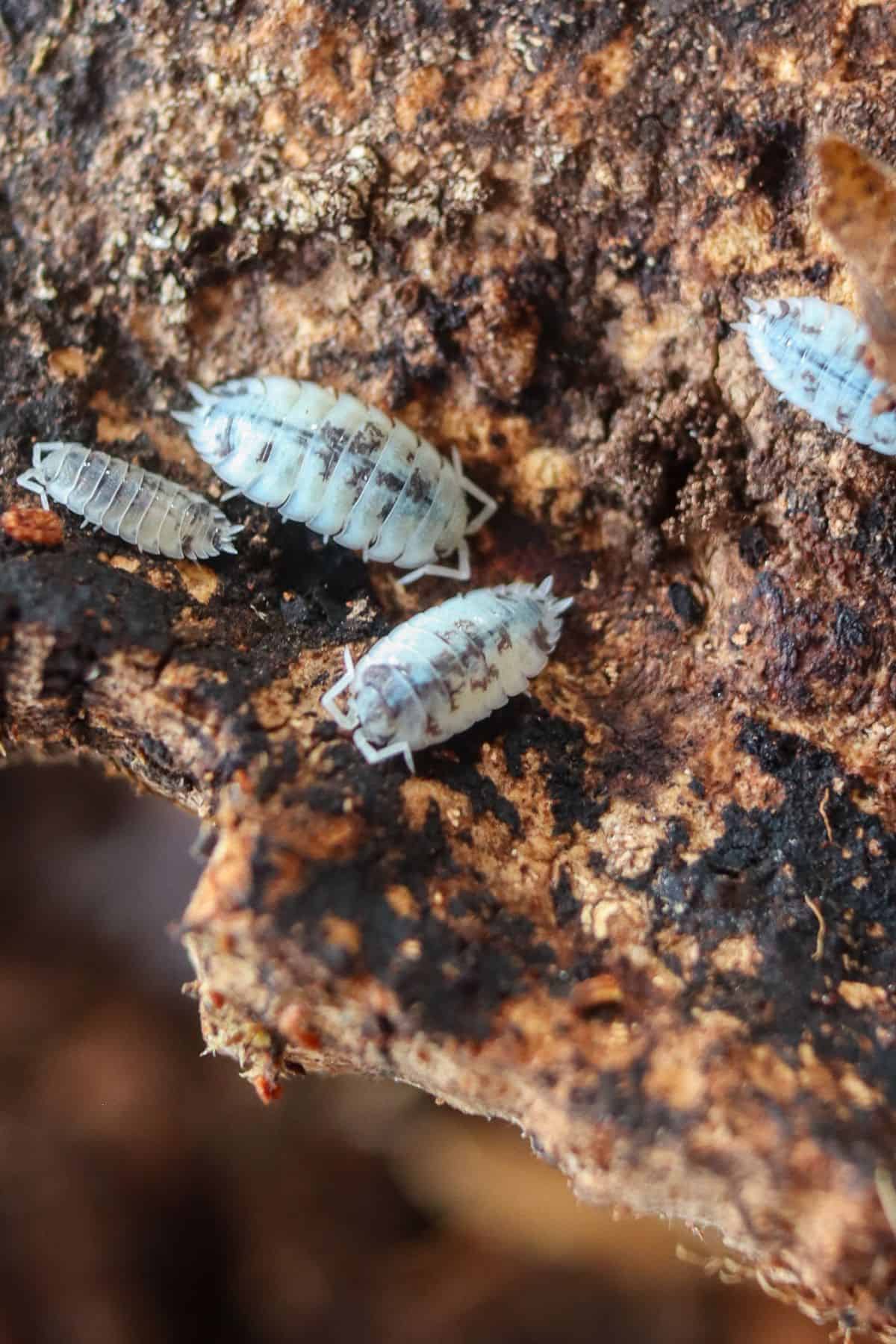
Substrate
In a bioactive setup, I always run with a well-balanced tropical blend with plenty of moisture retention, aeration, and drainage.
A version of ABG mix will have everything you need to support a healthy plant biome and all your microfauna custodians.
Sphagnum moss and orchid bark help to keep your crustacean critters moist (they’ll perish if they dry out!) and keeps the humidity high.
Also, I like to always include the addition of earthworm castings as organic nutrients for plants and microfauna.
When culturing in isolation, you can simplify the mix quite a lot. I like to use just coco coir, sphagnum moss, and worm castings as the base (with plenty of leaf litter, of course).
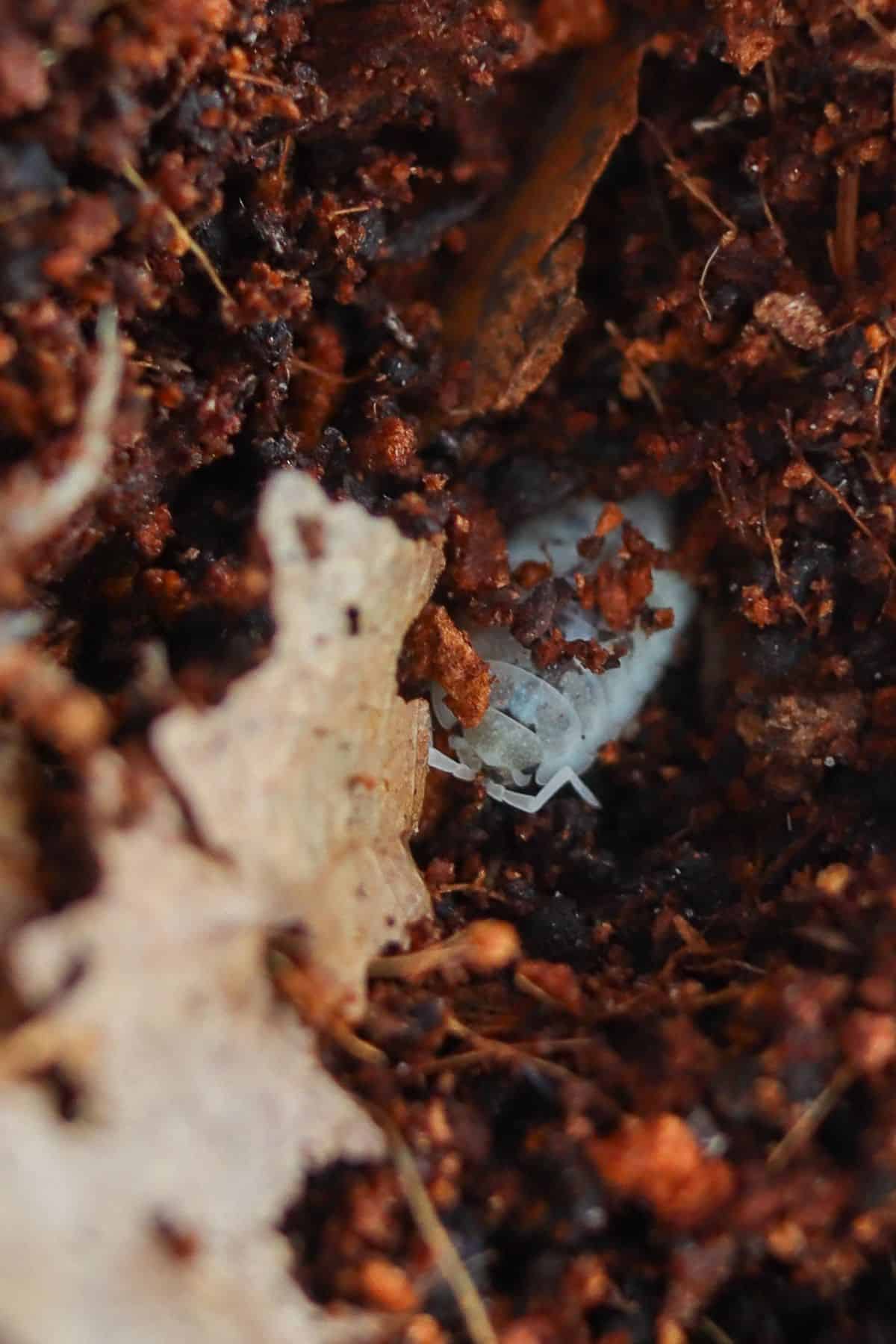
Temperature and Humidity
Dairy Cow Isopods like a warm and humid environment, which is what makes them such a great fit for terrariums.
That being said, they’re actually a pretty hardy species.
Many keepers report culturing them at room temperature with no issues, but anything in the region of 70-85°F (21-30°C) works a treat.
Humidity is much more important, as isopods need a consistent level of moisture to survive.
Aim for as much humidity as possible, 80%+ if you can.
That being said, there’s no need to fret. If you have everything set up right in a suitably moist closed environment, using a moisture-retentive substrate, and with enough warmth – you’ll be absolutely fine.
Food
These guys love to eat.
To be honest, they’re actually pretty bullish about it!
As one of the more aggressive isopod species, they would almost certainly out-compete any smaller species if they were to share a tank (so it’s not recommended).
Due to the voracious appetite of the Dairy Cow Isopods, you’ll need to supply plenty of detritus (decaying organic material) ingredients and supplementary foods.
Also, extra protein supplementation is essential. They’re a very protein-hungry isopods. Dairy Cow Isopods can reportedly turn to cannibalism if their protein needs aren’t met!
Food Requirements (+ Examples)
- Detritus – A consistent supply of leaf litter and decaying softwoods is essential to keep the isopod population ticking over.
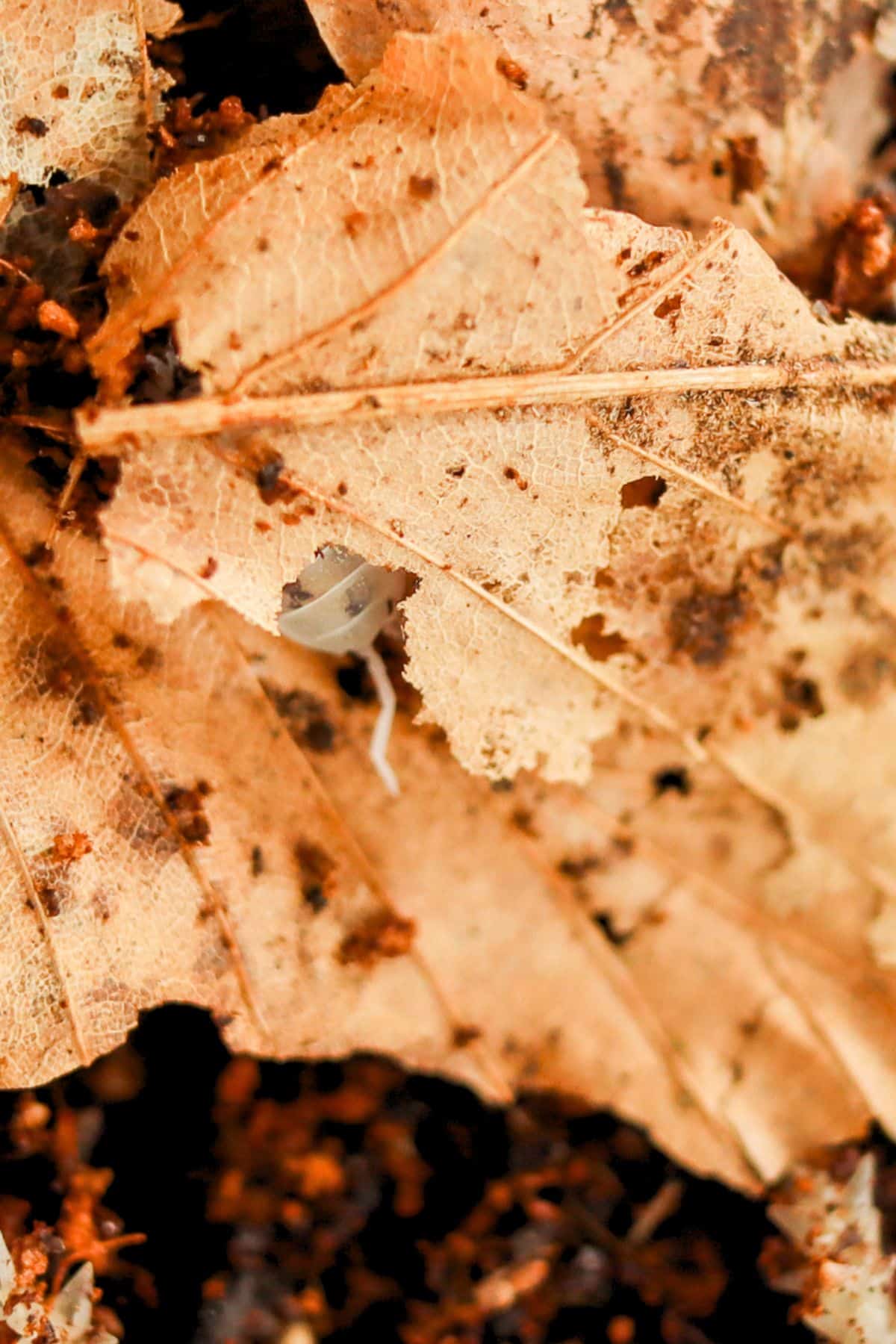
👉 We sell organic pin oak leaf litter on our shop.
- Vegetable – Pretty much any vegetable scraps seem to be well received, though sweet potato and mushrooms are reported to be their favorites.
- Protein – Fish flakes/pellets are a convenient choice for extra protein. Though the natural size of the Dairy Cow Isopods means you can actually feed them larger protein sources like dried shrimp.
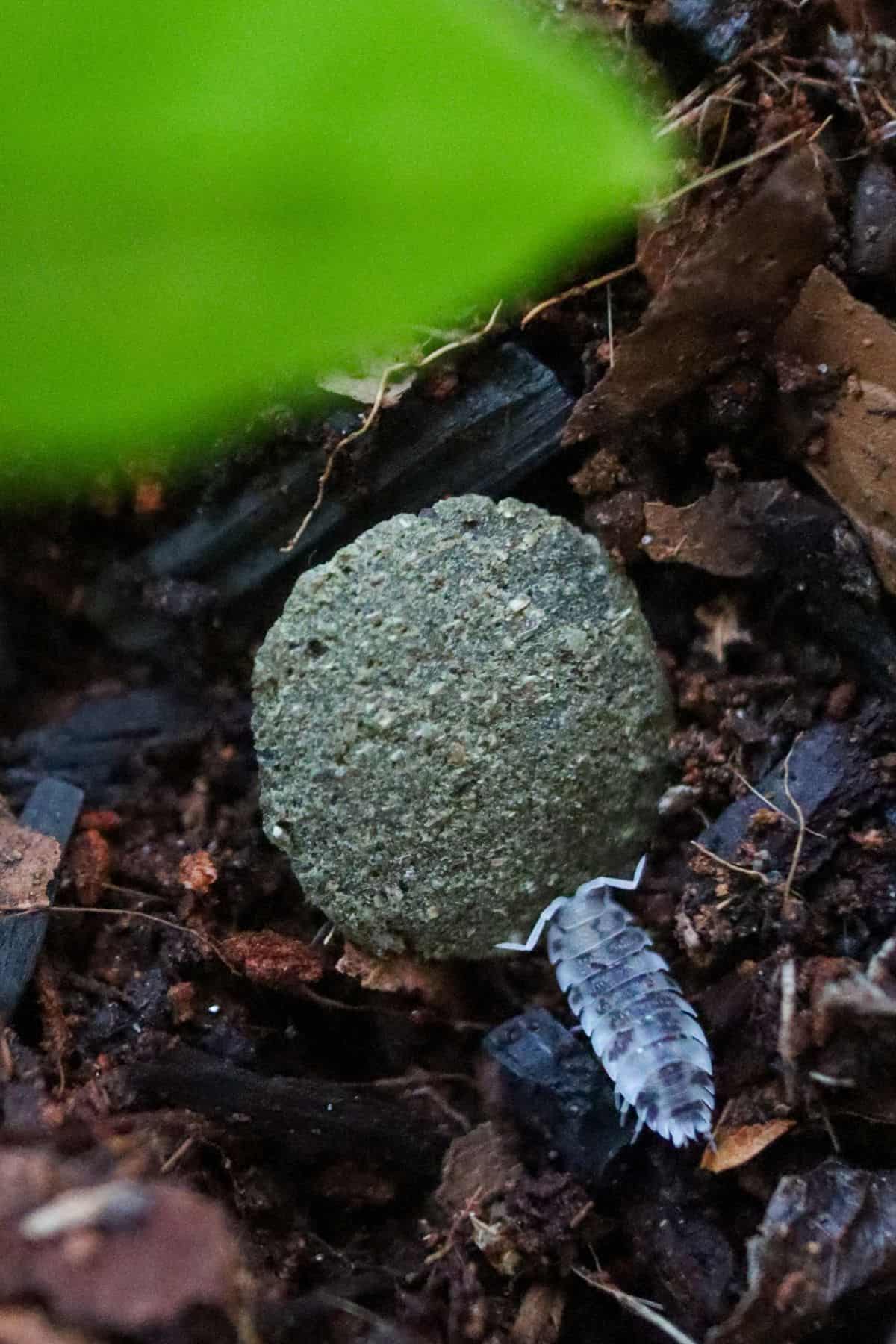
- Calcium – Isopods like Dairy Cows need extra calcium to support the development of their carapace. Crushed eggshells or cuttlefish bones are both great sources that you can add in small amounts.
- Dedicated isopod food – These proprietary blends are optimized for isopod health and are by far the most convenient way to address your feeding needs. We sell a hand-made concentrated isopod Superfood blend on our shop.
Just take care not to add too much food at once. Little and often is best, or you risk an overgrowth of mold and an unwelcome fungus gnat party.
👉 See my Guide to Isopod Foods for more help with nutrition.
How to Breed Dairy Cow Isopods
To be honest, breeding Dairy Cow Isopods isn’t much different from normal isopod care.
The more humidity, moisture, and warmth you can provide (within the safe range, of course), the more likely they are to breed.
That being said, they are prolific breeders.
After just a few weeks of starting a new isopod colony, you can expect to see some babies!
Where to Find Dairy Cow Isopods for Sale?
As one of the most popular isopod species on the market, Dairy Cow Isopods are readily available online.
We’ve partnered with the expert breeders from Rubber Ducky Isopods to sell them directly on our store.
So why choose to buy your isopods from us? We go the extra mile to make sure your isopods arrive safe and sound, and we don’t charge extra for heat/cold packs or insulated packaging.
Plus, along with your isopod starter culture in sphagnum moss, you’ll get some sprinkled oak leaf and isopod superfood to get you and your new friends started!
Side note, we also sell Porcellio laevis ‘Orange’ Isopods now too!
Over to You
Do you keep Dairy Cow Isopods and have some care secrets to share?
Let me know in the comments.
For another large isopod option, check out the Giant Canyon Isopod! Or, for more mottled goodness, how about the stunning Orange Koi Isopods?
Ready to get started with a new culture? You can buy isopods directly from our store today.

I just bought a start up kit from Rubber Ducky Isopods at a ReptileNation show in Fort Worth, TX today! Decided to google “Dairy Cow Isopods” and this was the first page that popped up! So happy to see that I bought from a recommended source!!
I have had mine for 3 days now. They are master hiders, I never see any of them!
As your population increases you will see more of them running around, but they do still like to hide under things. This is a natural behavior as they are often eaten by larger animals.
Same
How might I deal with a population explosion – ha! I got a few from Rubber Ducky a little while ago, and now have about 50 tiny babies in my tank. They’re super cute, but as they grow they won’t really fit well in there. They share the tank with plants, leaves, bark, moss…a ton of springtails and some other insects who moved in without my permission. Any suggestions on what to do with these new little cows?
A good problem to have! You could try isolating a bunch as a separate backup culture? Or you could always make another terrarium. 🙂
Are these isopods suitable for cohabitation with other Isopods as I wanted to add some zebras of panda kings to the terrarium
Generally no, I wouldn’t mix Cubaris or Armadillidium species with Dairy Cows. They can be quite bullish and will almost certainly outcompete them for food. I’d say only the likes of Dwarf Whites would be able to compete with them for resources and keep up with their reproduction rates.